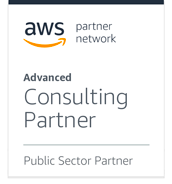Container Orchestration
At Takumi, we offer cutting-edge container orchestration solutions to streamline your containerized applications' management and deployment. Our expert team specializes in leveraging industry-leading container orchestration platforms like Kubernetes and Docker Swarm to automate container lifecycle management, ensure scalability, and enhance resilience. With our container orchestration solutions, you can efficiently manage and deploy your containerized applications across diverse environments, empowering your organization to embrace the agility and scalability of containerization with ease.
Migrate my infrastrucure
Container Orchestration
Container orchestration is a method of automating the management, deployment, scaling, and networking of containerized applications. It enables organizations to efficiently manage large fleets of containers across distributed environments, ensuring seamless deployment and operation of applications.
The Evolution of Container Management
Container orchestration represents a significant evolution in the management of containerized applications. It simplifies the deployment, scaling, and management of containers, allowing organizations to efficiently manage complex application architectures in distributed environments. By automating various tasks and providing centralized control, container orchestration platforms streamline the process of deploying and managing applications in containers.
Importance of Container Orchestration
Container orchestration plays a crucial role in modern application development and deployment workflows. With the rise of microservices architectures and containerization technologies like Docker, organizations are increasingly adopting container orchestration platforms to manage their containerized applications at scale. Container orchestration enables organizations to deploy applications faster, improve resource utilization, enhance scalability and resilience, and simplify operations by automating tasks such as load balancing, scaling, and service discovery.
Benefits of Container Orchestration
Container orchestration offers numerous benefits for organizations looking to deploy and manage containerized applications efficiently. These benefits include simplified application deployment, improved scalability and resilience, enhanced resource utilization, automated load balancing, and seamless application lifecycle management. By leveraging container orchestration platforms like Kubernetes, organizations can streamline their development and operations processes, accelerate innovation, and respond more quickly to changing business requirements.
Understanding Kubernetes
Kubernetes, often abbreviated as K8s, is the leading open-source container orchestration platform developed by Google. Understanding Kubernetes is essential for organizations looking to leverage the power of container orchestration and manage their containerized workloads effectively in dynamic environments. With its rich set of features and flexible architecture, Kubernetes enables organizations to run their applications reliably at scale and accelerate their journey towards cloud-native development and operations.
Request your quoteKey Features of Kubernetes
Kubernetes boasts a rich set of features that positions it as the leading container orchestration platform in the industry. These features include automated container management, built-in service discovery and load balancing, self-healing capabilities, horizontal scaling for optimal resource utilization, automated rollout and rollback of application updates, and flexible storage options for managing persistent storage.
Kubernetes Architecture
The architecture of Kubernetes consists of several key components working together seamlessly to provide a robust platform for container orchestration. These components include the master node, responsible for managing the Kubernetes cluster and coordinating communication between components; worker nodes, where containerized applications are deployed and executed; pods, representing the smallest deployable units in Kubernetes; and services, providing an abstraction layer for accessing and communicating with groups of pods.
Demystifying Kubernetes: Navigating Container Orchestration's Cornerstone
Kubernetes, hailed as the cornerstone of container orchestration, revolutionizes the deployment and management of containerized applications. This open-source platform, developed by Google, orchestrates the intricate dance of containers, automating tasks like deployment, scaling, and management with finesse. With Kubernetes, organizations can harness the power of containerization in dynamic environments, ensuring efficient resource utilization and seamless application delivery. From orchestrating microservices to scaling applications effortlessly, Kubernetes empowers organizations to navigate the complexities of modern application deployment with confidence.
Security Considerations in Container Orchestration
Container orchestration systems, like Kubernetes, offer powerful capabilities for managing containerized applications at scale. However, they also introduce unique security considerations. Here are some key security considerations in container orchestration:
Container Image Security
Pod Security Policies
Network Security
Authentication and Authorization
Secrets Management
Runtime Security
Vulnerability Management
Logging and Auditing
Continuous Delivery
Deploying applications to Kubernetes efficiently and securely involves several best practices to ensure smooth operations and optimal performance.
Request expert help today!Use Kubernetes Manifests
Define application deployment configurations using Kubernetes manifests, typically written in YAML or JSON format. Utilize Kubernetes resources such as Deployments, Services, ConfigMaps, and Secrets to describe the desired state of the application and its dependencies.
Use HELM Charts
Utilize Helm, a package manager for Kubernetes, to package, version, and deploy applications and services to Kubernetes clusters. Helm charts provide a convenient way to define and share complex application configurations, dependencies, and deployment options in a reusable format.Use ArgoCD
A declarative, GitOps continuous delivery tool for Kubernetes. It enables automated deployment of applications to Kubernetes clusters based on configurations stored in Git repositories. ArgoCD ensures that the desired state of applications matches the state declared in Git, promoting consistency and reliability in deployments.
kubectl apply Takumi Cloud
 Amazon Web Services
Amazon Web Services
 Microsoft Azure
Microsoft Azure
 Docker
Docker
 Kubernetes
Kubernetes
 Google Cloud
Google Cloud

Our partners
Google Cloud, Amazon AWS, Microsoft Azure, and Kubernetes trust us to implement their technologies in for our clients.



